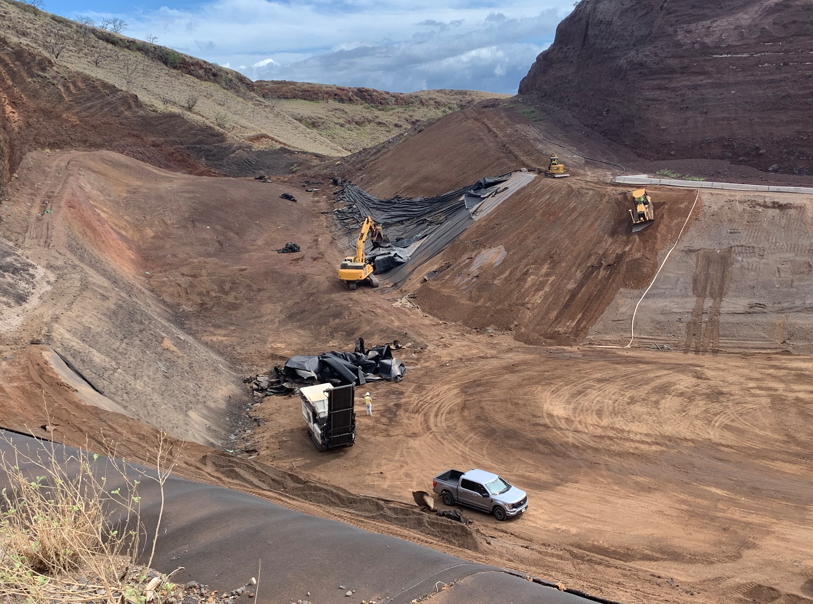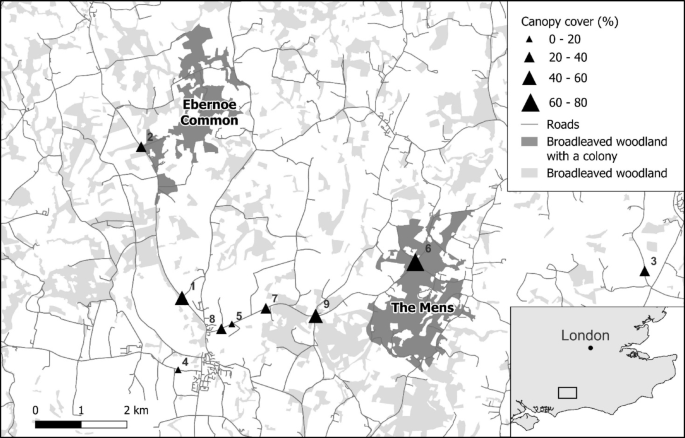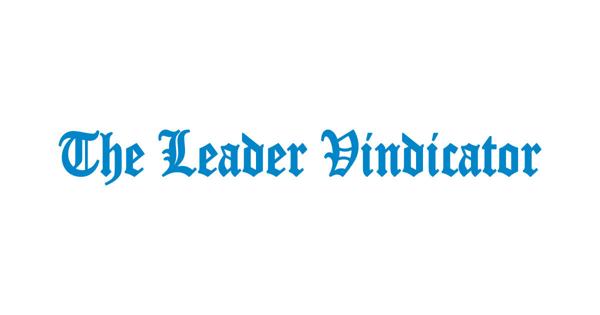Report on the EMBL and CEREEP-Ecotron IDF Freshwater Ecosystems Initiative
1.0 Introduction
A collaborative research initiative has been launched by the European Molecular Biology Laboratory (EMBL) and the Centre for Research in Experimental and Predictive Ecology (CEREEP – Ecotron IleDeFrance) to investigate freshwater ecosystems. This project leverages mobile laboratory technology to assess the vulnerability of these vital resources to anthropogenic pressures. The initiative directly supports several United Nations Sustainable Development Goals (SDGs), particularly those concerning water quality, biodiversity, and scientific partnership.
Building on the operational success and standardized methodologies of the Traversing European Coastlines (TREC) expedition, this new phase extends research into inland aquatic environments. The primary objective is to generate a comprehensive dataset on freshwater ecosystems for the international scientific community, thereby advancing global efforts towards environmental sustainability.
2.0 Project Objectives and Strategic Alignment with SDGs
The project’s core mission is to deepen the scientific understanding of freshwater environments at a molecular level. This aligns with global sustainability targets by providing critical data for environmental protection and management.
2.1 Primary Research Objectives
- To analyze the impact of human activity on freshwater ecosystem health, directly contributing to SDG 6 (Clean Water and Sanitation).
- To study microbial biodiversity and ecosystem dynamics in various freshwater bodies, supporting SDG 14 (Life Below Water) and SDG 15 (Life on Land).
- To overcome logistical challenges in environmental science by processing samples on-site, ensuring data accuracy and real-time analysis.
- To develop and standardize sampling protocols for inland waters, enhancing research capabilities in line with SDG 9 (Industry, Innovation, and Infrastructure).
2.2 Methodological Innovation
A key innovation of this project is the deployment of EMBL’s Advanced Mobile Laboratories. This approach addresses a significant challenge in aquatic research: the alteration of samples during transport. By bringing advanced analytical technologies to the field, the project facilitates more accurate assessments of environmental conditions.
- Protocols originally developed for coastal environments were adapted for freshwater systems, including rivers, lakes, and experimental ponds.
- Comprehensive sampling of water, sediment, and soil was conducted in the Fontainebleau region of France.
- Collected samples will undergo sequencing and environmental analysis, including pollution assessments, to create a robust dataset.
3.0 Partnership, Education, and Public Engagement
3.1 Fostering Global Partnerships (SDG 17)
The initiative is founded on a strong collaboration between EMBL and CEREEP-Ecotron IDF. This partnership exemplifies SDG 17 (Partnerships for the Goals) by combining institutional expertise and resources to address complex environmental challenges. CEREEP-Ecotron IDF provided logistical support, expert knowledge, and served as the main base for analyzing continental ecosystem samples.
3.2 Promoting Quality Education and Public Awareness (SDG 4)
The project integrated a significant public outreach component, directly supporting SDG 4 (Quality Education). These activities aimed to make complex science accessible and inspire public interest in environmental stewardship.
- University students from the École normale supérieure (ENS) participated as volunteers, gaining hands-on research experience.
- The research teams participated in the “Fête de la Science” week, engaging with the public through interactive events.
- Activities included a science-themed treasure hunt and a hands-on stall where visitors could learn about the expedition’s scientific basis.
- An open day provided the public with direct access to the mobile laboratories and an opportunity to interact with the research scientists.
4.0 Conclusion and Future Directives
The pilot project in the Fontainebleau region successfully concluded, achieving its primary goals of completing the first inland research stop and developing new standardized protocols for freshwater analysis. The close collaboration between the EMBL and CEREEP-Ecotron IDF teams was instrumental in this success. The developed protocols will now be tested and applied across other European locations, expanding the scope of this critical environmental research. The data generated will contribute to a global understanding of freshwater ecosystems, supporting evidence-based policymaking for the achievement of the Sustainable Development Goals.
Analysis of Sustainable Development Goals in the Article
1. Which SDGs are addressed or connected to the issues highlighted in the article?
- SDG 6: Clean Water and Sanitation – The article’s central theme is the study of freshwater ecosystems, their health, and their vulnerability to human activities, which directly relates to ensuring the availability and sustainable management of water.
- SDG 15: Life on Land – The research focuses on inland freshwater ecosystems, including rivers and lakes, and involves collecting sediment and soil samples to study biodiversity. This aligns with the goal of protecting and restoring terrestrial and inland freshwater ecosystems.
- SDG 4: Quality Education – The project includes a significant public engagement component, such as the “Fête de la Science week,” where scientists interact with students and the public to make complex science accessible and inspiring, contributing to education for sustainable development.
- SDG 17: Partnerships for the Goals – The initiative is a collaborative effort between multiple scientific institutions (EMBL and CEREEP – Ecotron IleDeFrance) and involves a network of partners. The goal of creating a comprehensive dataset for the international scientific community exemplifies the spirit of partnership for sustainable development.
2. What specific targets under those SDGs can be identified based on the article’s content?
-
SDG 6: Clean Water and Sanitation
- Target 6.3: By 2030, improve water quality by reducing pollution. The article states that the research includes “pollution assessments” as part of the environmental analysis of freshwater samples, which is a foundational step toward improving water quality.
- Target 6.6: By 2020, protect and restore water-related ecosystems. The entire project is designed to “study freshwater ecosystems and their vulnerability to human activities” and to “deepen our understanding of how variations in this specific environment shape life.” This research provides the essential data needed to inform protection and restoration efforts for ecosystems like rivers and lakes.
-
SDG 15: Life on Land
- Target 15.1: By 2020, ensure the conservation, restoration and sustainable use of terrestrial and inland freshwater ecosystems. The research initiative, which explores a range of environments from the “River Seine” to “natural or under-controlled lakes,” directly contributes to the knowledge base required for the conservation and sustainable management of these ecosystems.
- Target 15.5: Take urgent and significant action to reduce the degradation of natural habitats, halt the loss of biodiversity. By collecting and sequencing samples to “study biodiversity and environmental pressures in the ecosystem,” the project helps identify threats and provides data to guide actions against habitat degradation and biodiversity loss.
-
SDG 4: Quality Education
- Target 4.7: By 2030, ensure that all learners acquire the knowledge and skills needed to promote sustainable development. The article describes how the project team participated in “Fête de la Science week,” hosting a “hands-on TREC activity stall” and an “interactive introduction to TREC” to bring science to life for students and the public, thereby promoting education for sustainable development.
-
SDG 17: Partnerships for the Goals
- Target 17.6: Enhance regional and international cooperation on and access to science, technology and innovation. The project is a clear example of this, as “Scientists from EMBL and CEREEP – Ecotron IleDeFrance (IDF) joined forces” and collaborated with a “strong network of partners.”
- Target 17.7: Promote the development, transfer, dissemination and diffusion of environmentally sound technologies. The article highlights the deployment of “mobile laboratories” and the development of “new standardised freshwater protocols,” which are cutting-edge methods and technologies being tested and applied across Europe.
3. Are there any indicators mentioned or implied in the article that can be used to measure progress towards the identified targets?
-
For SDG 6 (Targets 6.3 & 6.6)
- Implied Indicator: Data on ambient water quality and pollution levels. The article mentions that researchers will conduct “environmental analyses – including pollution assessments.” The results of these assessments serve as a direct measure of water quality in the studied ecosystems.
- Implied Indicator: A comprehensive dataset on the state of freshwater ecosystems. The project’s aim to “build a comprehensive dataset for the international scientific community” from water, sediment, and soil samples implies the creation of a baseline to monitor changes in these ecosystems over time.
-
For SDG 15 (Targets 15.1 & 15.5)
- Implied Indicator: Data on biodiversity in freshwater ecosystems. The plan to “sequence these samples” to study biodiversity provides a direct measure of the variety of life in these habitats, which can be used to track biodiversity loss or recovery.
-
For SDG 4 (Target 4.7)
- Implied Indicator: Number of participants in science and sustainability education activities. The article mentions that scientists welcomed “students” and “visitors of all ages” during the “Fête de la Science week,” implying that the number of people reached through these public engagement events is a measure of progress.
-
For SDG 17 (Targets 17.6 & 17.7)
- Implied Indicator: Number of collaborative scientific partnerships and shared knowledge products. The partnership between “EMBL and CEREEP – Ecotron IleDeFrance” and the goal to create a “comprehensive dataset for the international scientific community” are direct indicators of scientific cooperation and knowledge sharing.
- Implied Indicator: Development and dissemination of new scientific protocols. The creation of “new standardised freshwater protocols” that will be tested and applied “across Europe” is a tangible outcome that measures the development and diffusion of new scientific methods.
4. Table of Identified SDGs, Targets, and Indicators
| SDGs | Targets | Indicators (Implied from the article) |
|---|---|---|
| SDG 6: Clean Water and Sanitation | 6.3: Improve water quality by reducing pollution. 6.6: Protect and restore water-related ecosystems. |
– Data from “pollution assessments” of freshwater samples. – Creation of a “comprehensive dataset” on the health of freshwater ecosystems. |
| SDG 15: Life on Land | 15.1: Conserve and restore terrestrial and inland freshwater ecosystems. 15.5: Halt biodiversity loss. |
– Data on biodiversity derived from the sequencing of water, sediment, and soil samples. |
| SDG 4: Quality Education | 4.7: Ensure all learners acquire knowledge for sustainable development. | – Number of public and student engagement activities conducted (e.g., “Fête de la Science week”). – Number of participants (“students,” “visitors”) in science education events. |
| SDG 17: Partnerships for the Goals | 17.6: Enhance international cooperation on science, technology, and innovation. 17.7: Promote development and diffusion of environmentally sound technologies. |
– Number of collaborative research initiatives (e.g., EMBL and CEREEP). – Development and dissemination of “new standardised freshwater protocols.” – Creation of open-access scientific datasets for the “international scientific community.” |
Source: miragenews.com







